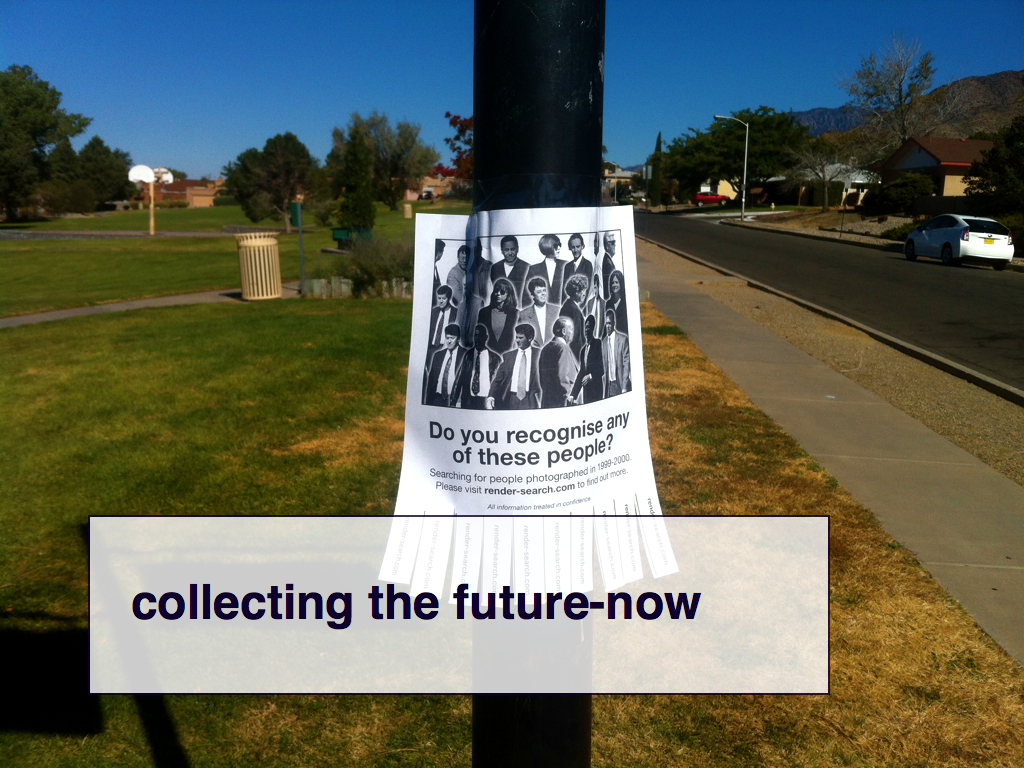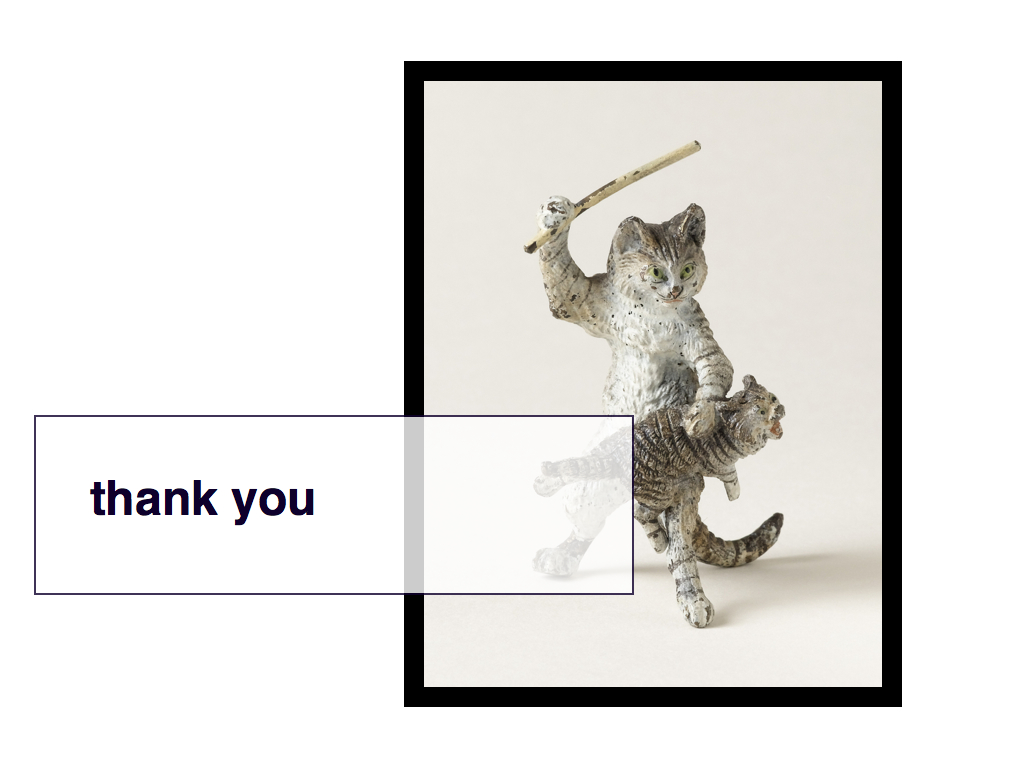the present happened
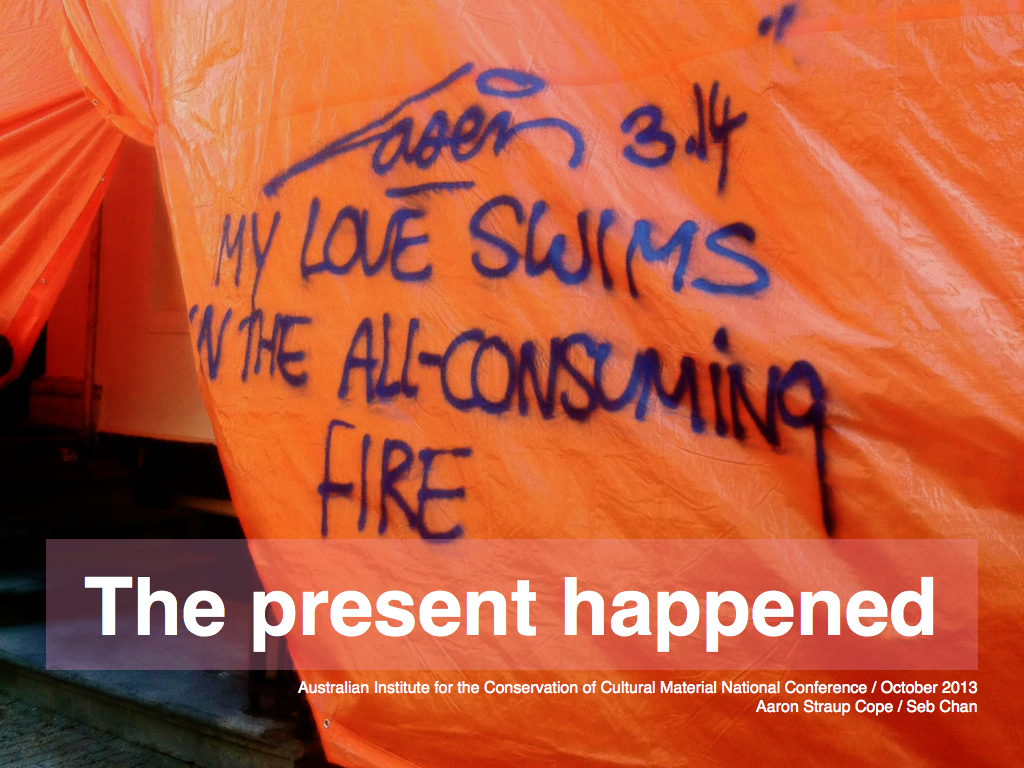
Last week Seb and I spoke at the Australian Institute for the Conservation of Cultural Material National Conference. We talked about the Cooper-Hewitt's acquistion of Planetary, earlier this year. We were not in Australia but instead we used the magic of the Internets to connect our respective homes to an assembled audience in Adelaide (who also were in the future
) which when you think about it is sort of amazing. After some technical hiccups I ended up sharing my screen with the conference attendees which meant that I couldn't see them. So as you read this just imagine me sitting on my couch talking at my laptop. This is what I said, taking in to account the part where the reality is always edited and embellished a little in the re-telling.
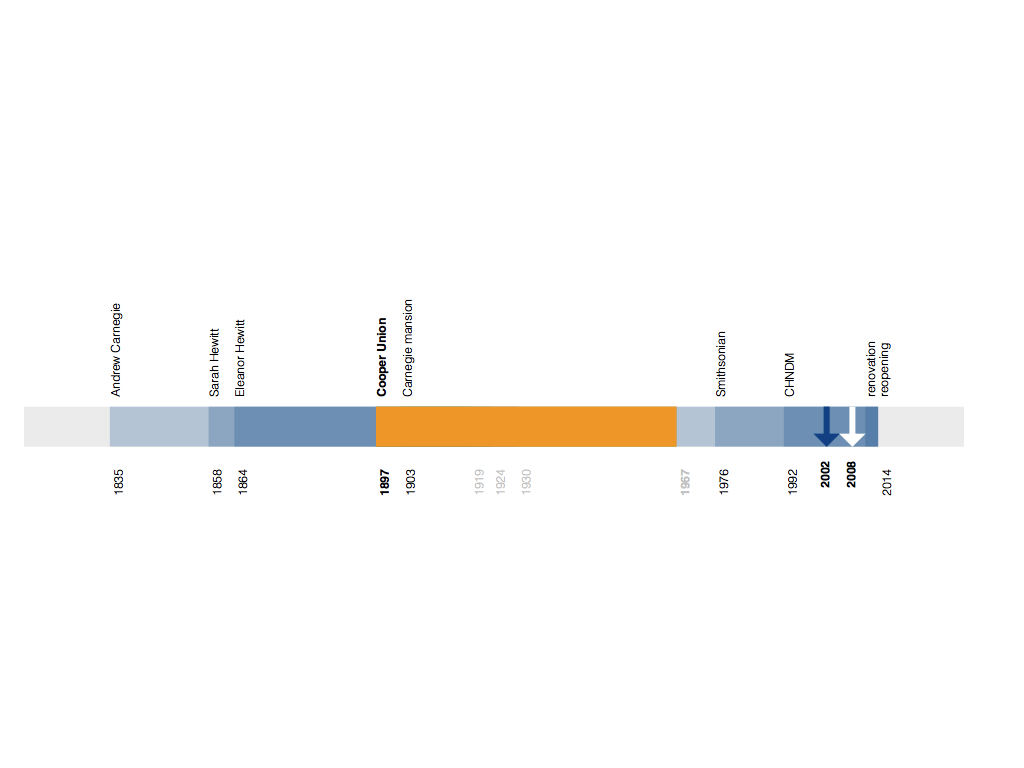
I'd like to start with a very condensed history of the Cooper-Hewitt. In 1897 Sarah and Eleanor Hewitt opened the Cooper Union Museum for the Arts of Decoration. It was so named after the Cooper Union, founded by their grandfather Peter, where the collection was housed.
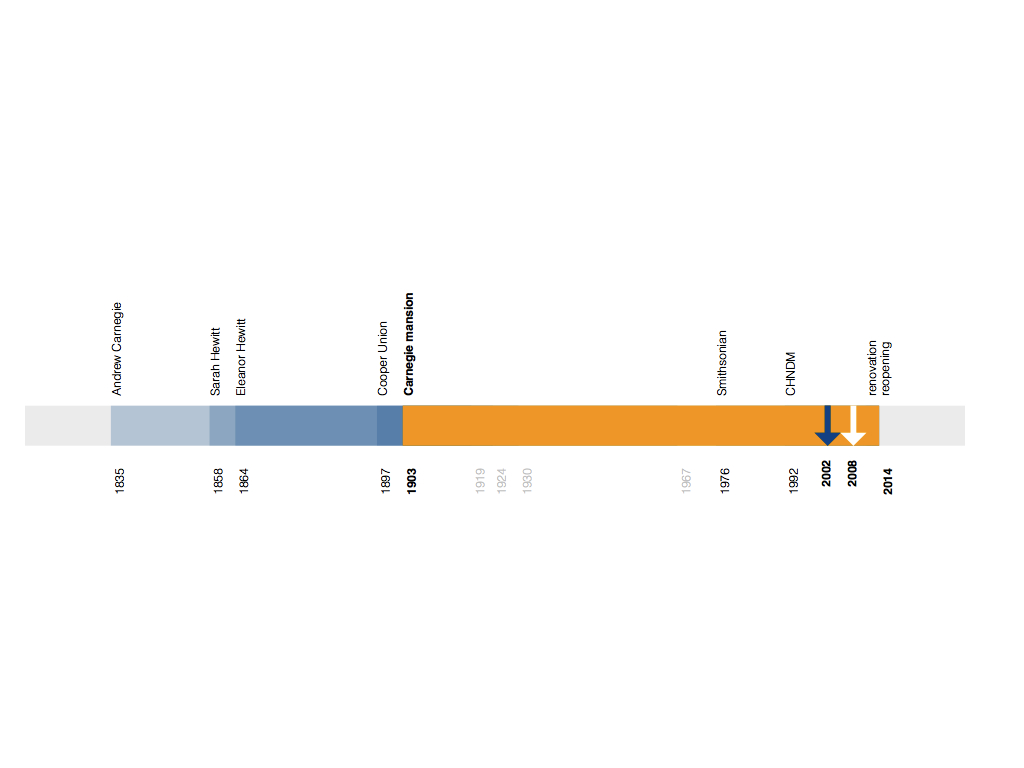
In 1903 Andrew Carnegie built himself a mansion in what is now New York City's Upper East Side. The mansion still stands and for those of you familiar with the major sites in New York it is located a block north of the Guggenheim museum, famously designed by of Frank Lloyd Wright. The mansion will become relevant in a moment.
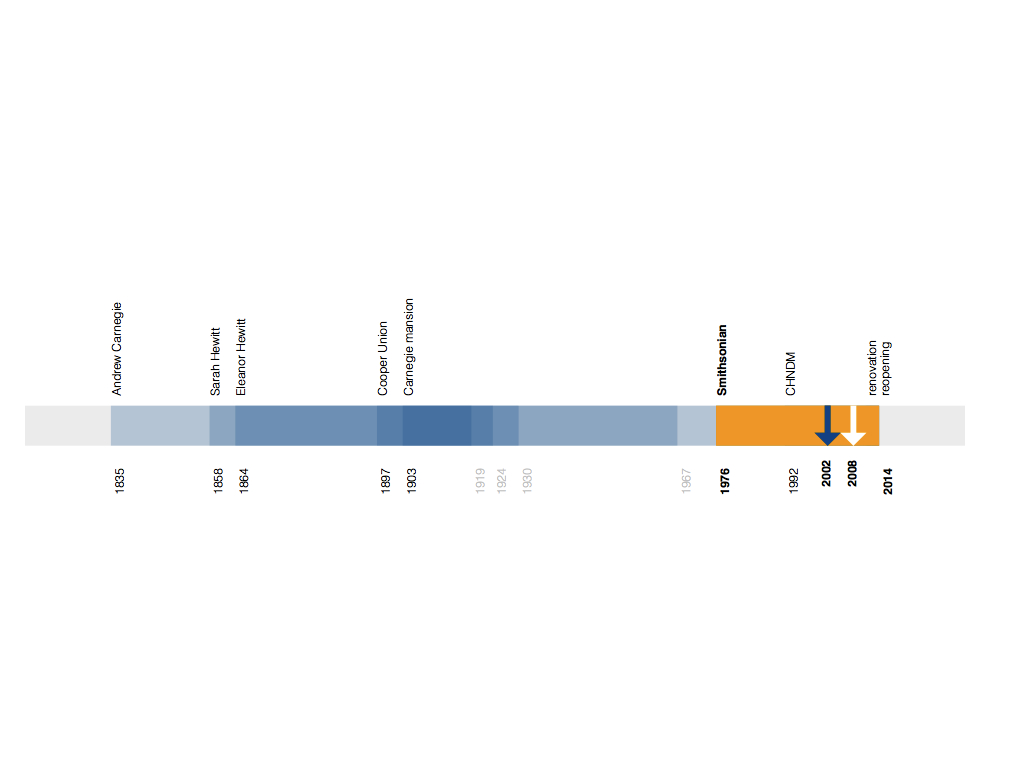
Like right now. By the late 1960s the original decorative arts museum was no longer financially viable and the Smithsonian agreed to take on the collection. At the same time the Smithsonian was in discussions with Andrew Carnegie's family to assume the stewardship of the same mansion I just told you about. You can guess what happened next and in 1976 the doors to Andrew Carnegie's mansion re-opened to the public as the Cooper-Hewitt Design Museum so that they could once more enjoy the collection that the Hewitt sisters had acquired over the years.
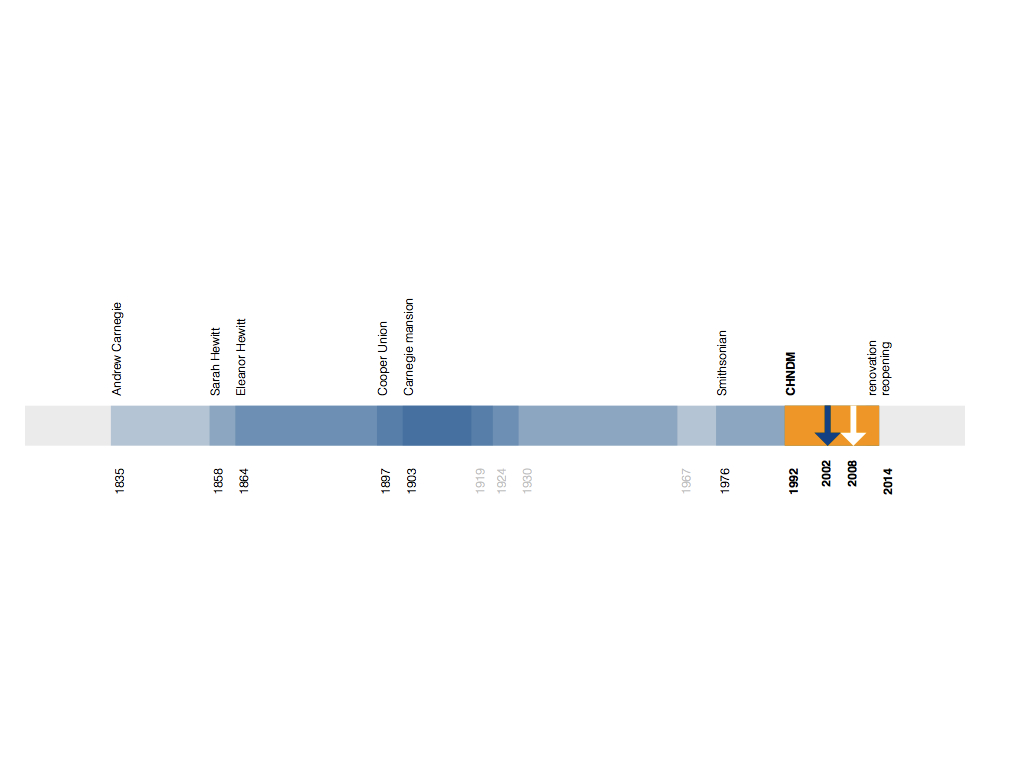
In 1992 the Cooper-Hewitt assumed the mantle of the National Design Museum and began to make design, rather than decorative arts, its primary focus. We are still charged with the long term care and study of the Hewitt sisters collection but we spend most of time thinking about capital-D design as most people now know it.
In 2011 the museum closed its doors to complete a historic restoration of the mansion and to re-imagine what it means for a museum to embrace the Internet, in body and spirit. To treat the Network, and all the opportunities and challenges it presents, as a part of the museum itself rather than a rubber ducky floating alone in the bathtub. If that sounds a bit hand-wavey that's because it is. A big part of our job on the digital team is to make those ideas tangible intellectually but then also to build them.
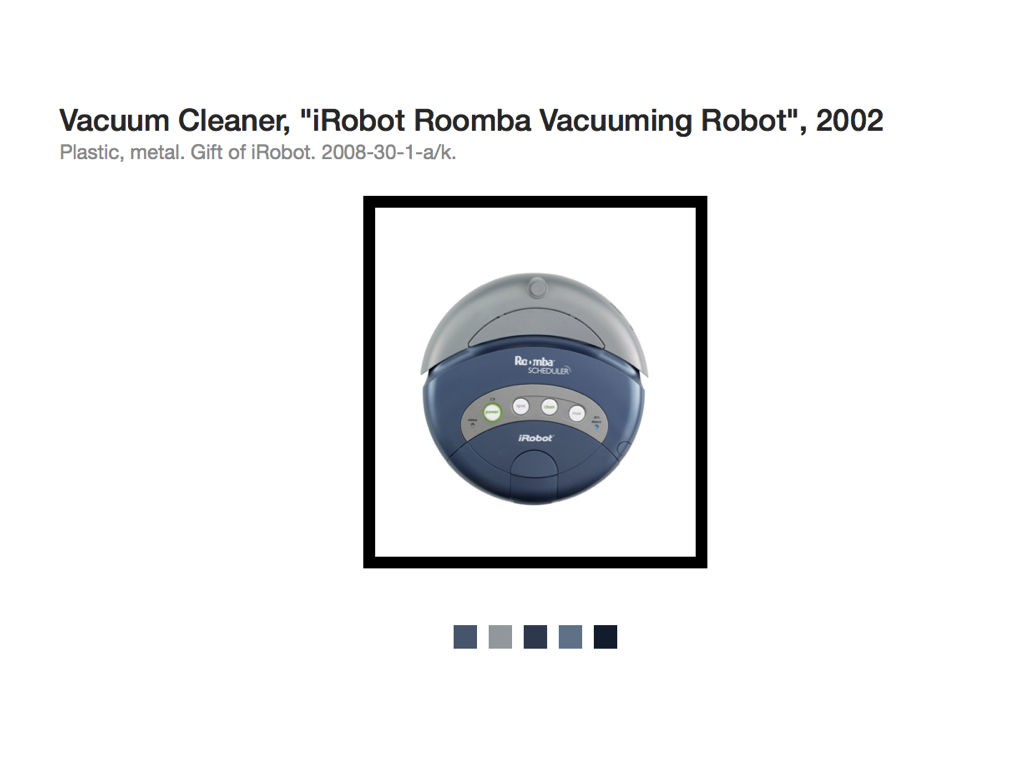
Quickly, for those of you wondering about the two arrows in this timeline they represent the year that we acquired a Roomba in to our collection (2008) and the year that it was first produced (2002). The timeline is an experimental feature we've enabled on our collections website to try and situate an object within the velocity of the major events in the museum's history, but that's another talk for another time.
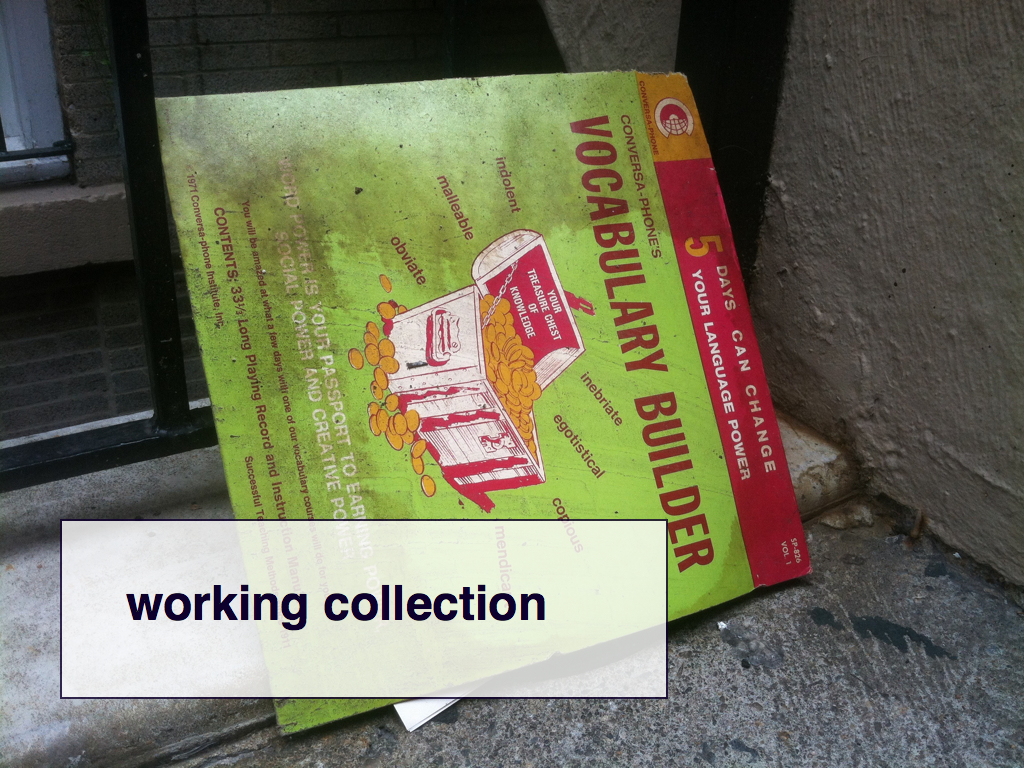
The original Museum for the Arts of Decoration was what is called a "working collection". The museum was meant to be an active space not just for learning about the history of decorative arts but for training amateur and professional crafts people alike.
So the Hewitt sisters' approach to collecting artifacts was by comparative standards of their day encyclopedic. All of this was happening in a time before capital-D design even existed. Before design there was the decorative arts. Before during and after the decorative arts there have always been crafts people and they have always learned by watching and copying the work that came before them.
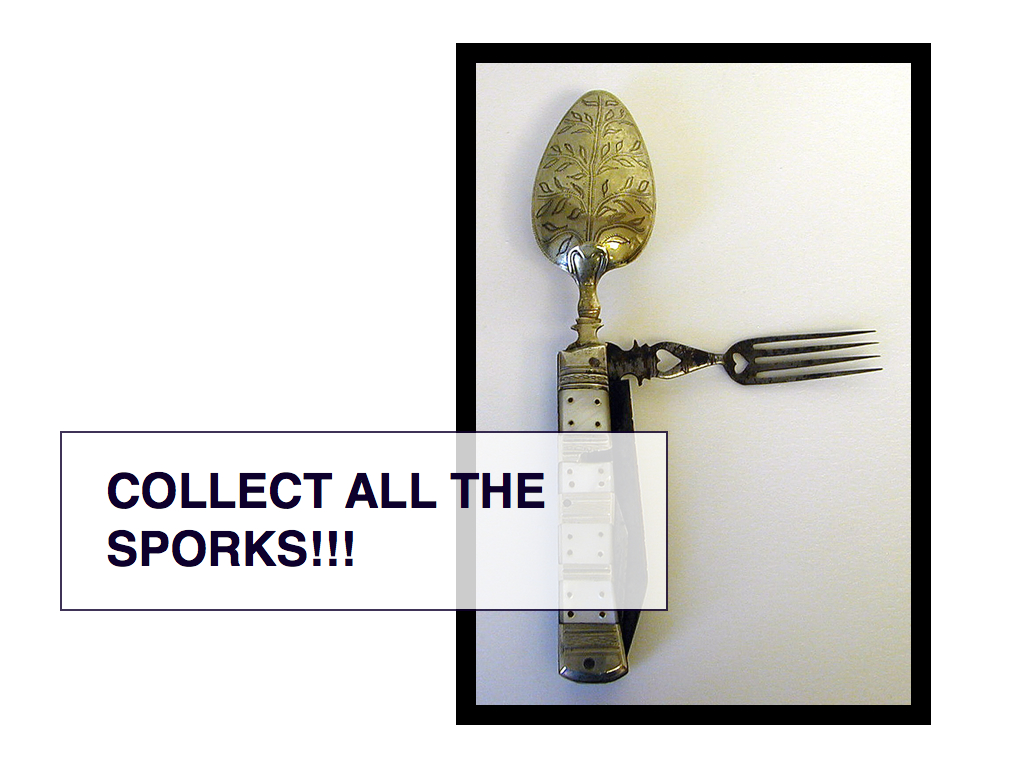
So we have all the sporks. And the spoons. And the forks, too. We have all the things you'd expect a pair of wealthy, well-intentioned members of New York City's upper class to be collecting at the end of the 18th century. Which means we have a lot of stuff from France. You don't choose your family, right?
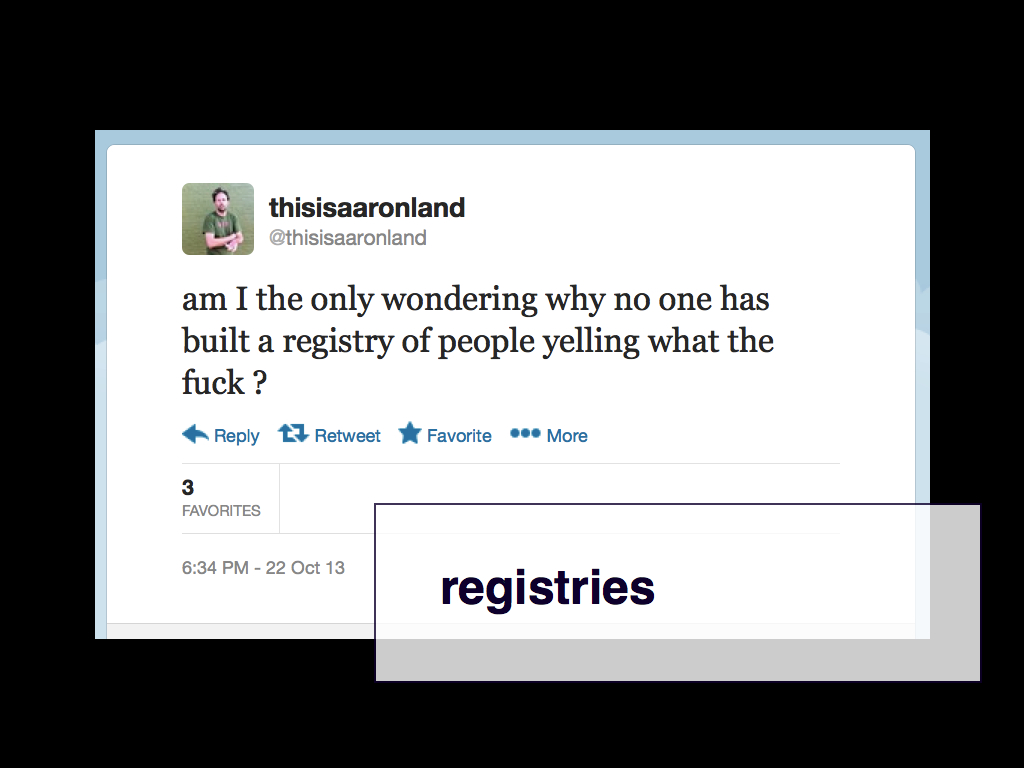
Some of you may be wondering how a museum like ours squares the goal of an encyclopedic collection in a world where we are buffeted on both sides by private corporations and the public alike.
On one side we live in a world where companies like Target and Amazon exist. Their enormous catalog and warehouses full of products make the Hewitt sister's endeavour seem sort of quaint when looked at in the cold hard light of the 21st century. If you still doubt me stop for a moment and consider what it means when Amazon hires a staff of professional curators and gives them not simply a mandate but the resources to pursue it. What if they not only give them a mandate but an endowment?
That sounds a bit like... a museum.
At the same time, the existence of these companies coupled with a steady rise in the availability of networked databases (without which companies like Amazon couldn't survive) means that people's expectations about the breadth and volume of information available to use are rapidly outpacing our ability to meet them. We are forever
we tell ourselves but short of some sort of catastrophic failure at a societal level, at which point we will have much bigger problems on our hands, we will continue to be judged against the standards of contemporary convenience.
I have remarked in the past that the distinction between libraries and museums and archives is collapsing in the minds of most people who work outside of those professions. I'm not sure that the distinction ever existed for some people. That is not the subject of this talk but I want to raise the issue and then send it off to sit in the corner. We'll point at it a few times during the rest of this talk.
This is a talk about digital preservation and specifically about a piece of software, an iPad app called Planetary, that the Cooper-Hewitt acquired earlier this year. We will talk about Planetary but I'm going to take the scenic route to get there. Our motivation and our approach to acquiring Planetary do not exist in a vacuum and it is important to understand the context in which the acquisition was made.
There's a running joke that the Smithsonian is the nation's attic. Some people bristle at this description but I am among those who celebrate it. I actually think that the Smithsonian's mandate to collect maybe not all but many of the things on-a-scale-as-to-seem-like-most-of-them under the aegis of the federal government is pretty amazing. We have spaceships and pandas and masterworks in the fine arts. We have vacuum cleaners and sporks. And we collect all this stuff because, as a society, we believe it is important to remember the role these artifacts played in the history of the United States.
And its an idea that extends beyond the past. Despite all the jokes and on-going concerns about the US economy and its political class acting like chaos-monkeys America isn't going anywhere anytime soon so we have both a responsibility and an opportunity as a public institution to pay attention to and to actively collect the future-now.
To pay attention to the present in the service of the past.
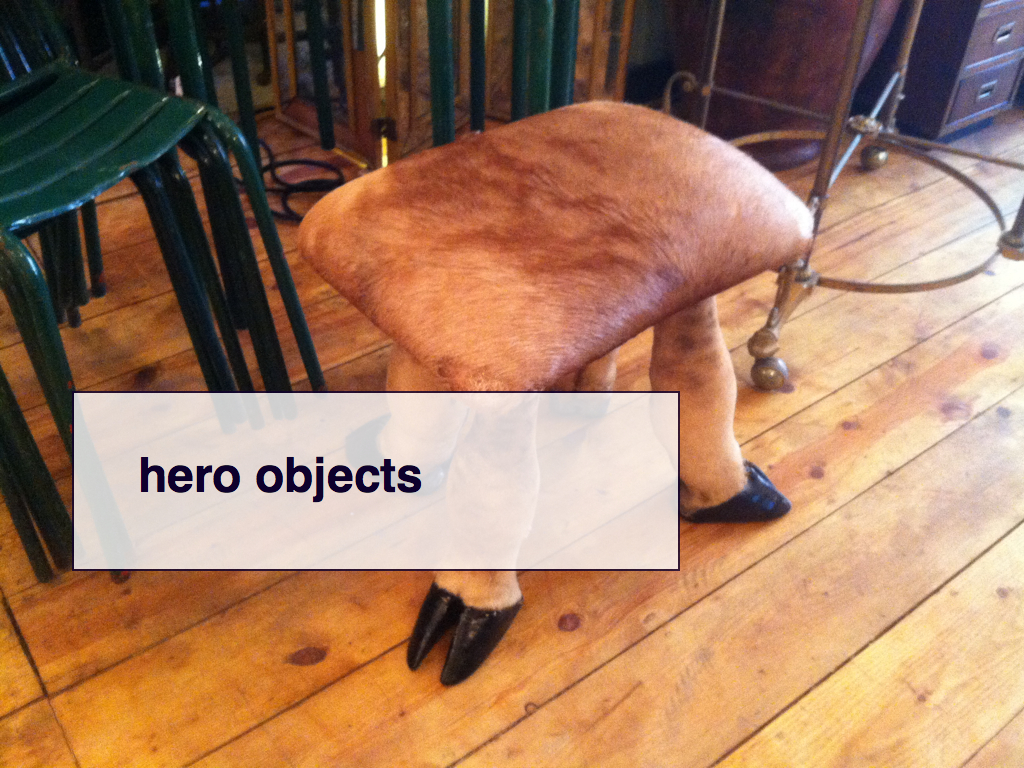
So here we are. We are an arm of a large publicly funded cultural heritage institution with a mandate to promote an awareness and appreciation of design. Design, not art. Or put another way objects that are the manifestation of a solution to a stated problem rather the singular exemplary itch of an artist.
But we — and by we
I mean all design museums — are not immune to the thrill and allure of hero objects.
In case you're wondering, this chair might be a hero object to some but is not part of our collection. I found it in an antique shop in Brooklyn. Maybe it should be part of our collection and given some of things the museum, never mind the Hewitt sisters, has collected over the years I could make a pretty compelling case that it already was.
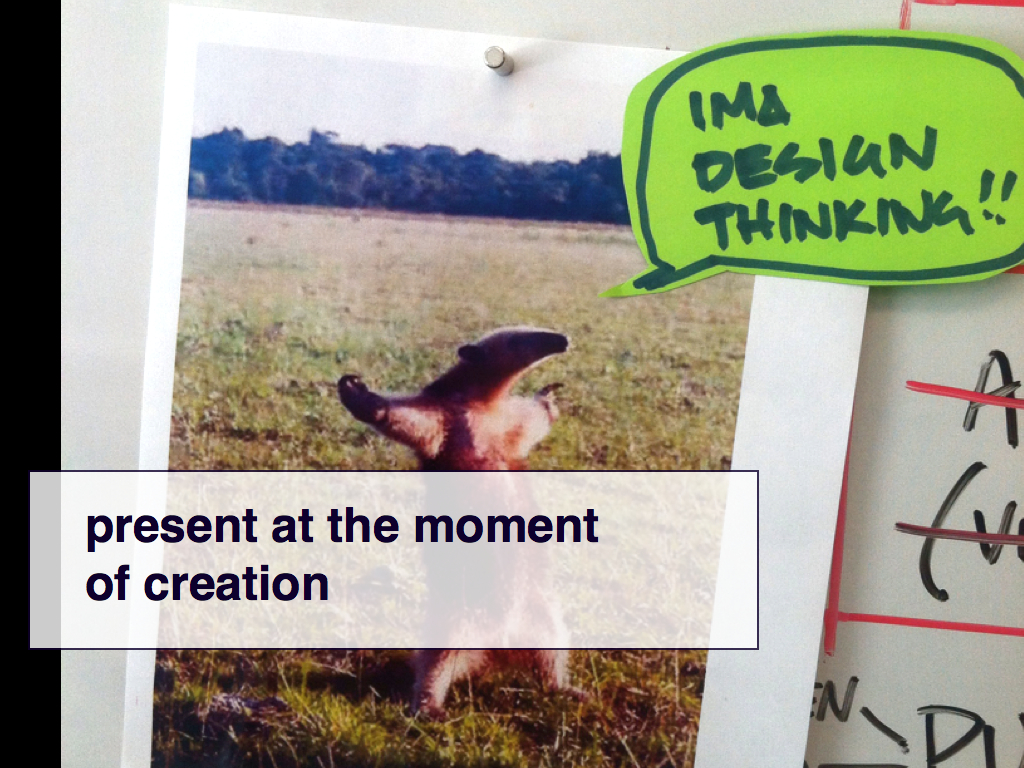
Like the relationship between libraries and archives and museums I want to float another open question but only long enough to see it and then send it to stand in the corner with the other tangents and sidecar conversations. I want to ask why it is that we celebrate certain instantiations of a design object over others. Why is a chair designed by Ray and Charles Eames more special - why is it the hero object - the closer it is to its creators?
These are supposed to be objects whose purpose embodies a uniform reproducibility. Many of the other museums, art museums and design museums alike, in New York City have their own copies of the classic Eames armchair (and ottoman) but we would crawl and scratch our way over each other if we thought we could get our hands on a chair that rolled of the very first assembly line rather than something produced to the same exact standards of the time, in 2013.
What about Osama bin Laden's AK-47 that the CIA "acquired" in 2011 and is on view in their own private museum? Is that a genuine "hero object" or just one of many that roll of the assembly lines and in to armed conflict every year?
Like I said this is an entirely other conversation but it's not one that we escape easily (or ignore wisely) in the day-to-day of our role as a design museum. It's not a distinction that I think makes a whole lot of sense for product design and it makes even less sense applied to software.
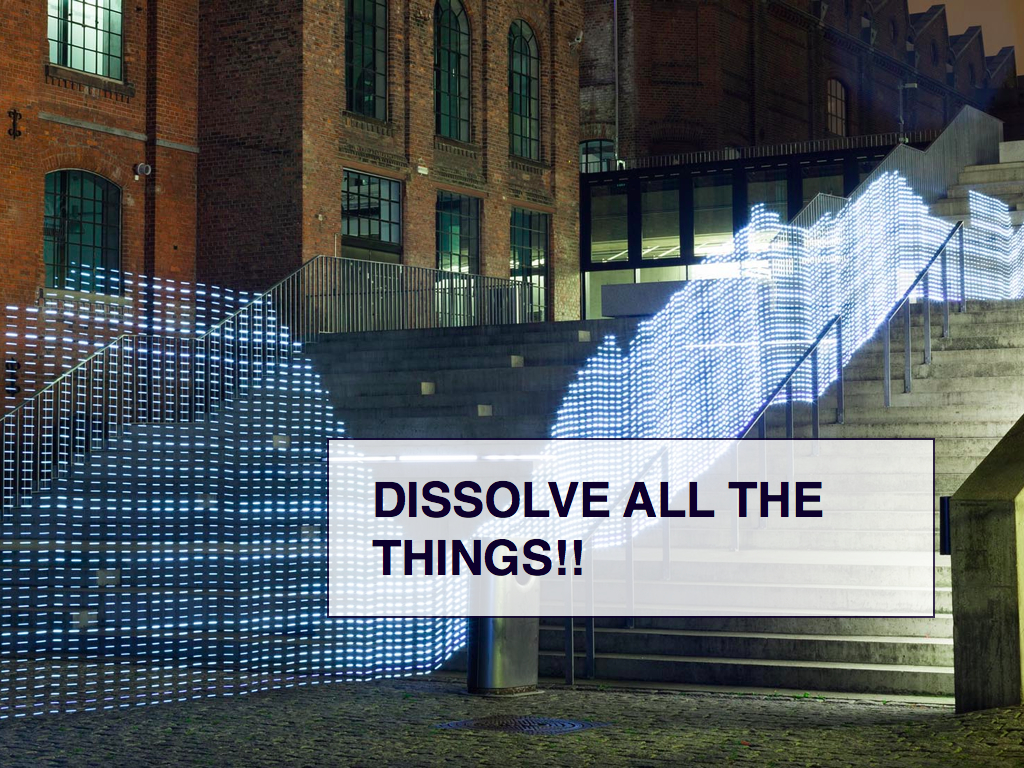
This is a project by Timo Arnall and Jørn Knutsen and Einar Sneve Martinussen to visualize the presence and strength of available wireless signals along a path by painting the terrain in light.
If any of you grew up in the 1980s you might remember the endless chorus of people telling you that, with the advent of the personal computer and ever-cheaper computing power in general, everything was going to dissolve in to ones and zeroes. Except that it didn't happen. Not in the 1980s at least and I think everyone sort of felt like they'd been cried "wolf" to and carried on. And then somewhere between then and now everything really did start dissolving into ones and zeroes. Without anyone really noticing.
And that makes for a lot of confusing moments. Without a whole lot of warning, the present happened.
This is kind of a big deal for a museum charged with preserving design because the things we're meant to showcase are increasingly intangible. Some designs might have manifestations or instantiations but sometimes (by which I mean more and more often) there is no single Ur-object that can serve to crystallize its importance.
We can not snapshot every waking moment – although some people keep trying – but it seems a shame and an abdication of our responsibility to simply throw up our hands and say that the best we can do for things that can't be objectified, literally, is to take a couple pictures and jot down a few descriptive paragraphs. That feels like we're not trying very hard at best and actively moving backwards at worst.
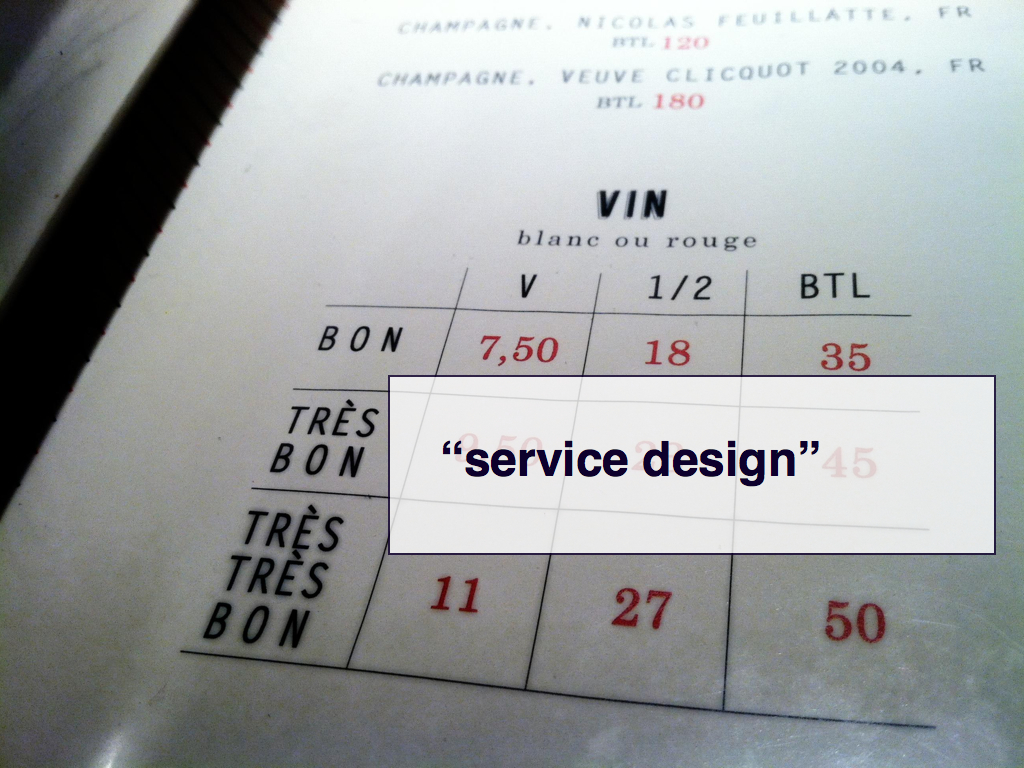
For example, service design. Or experience design. The two often go hand in hand. Whatever their relationship they are also very real design practices. Lots of really smart people spend their lives thinking about how you apply the principles of successful traditional design to systems that are more complex than a single object and increasingly have no tangible form at all.
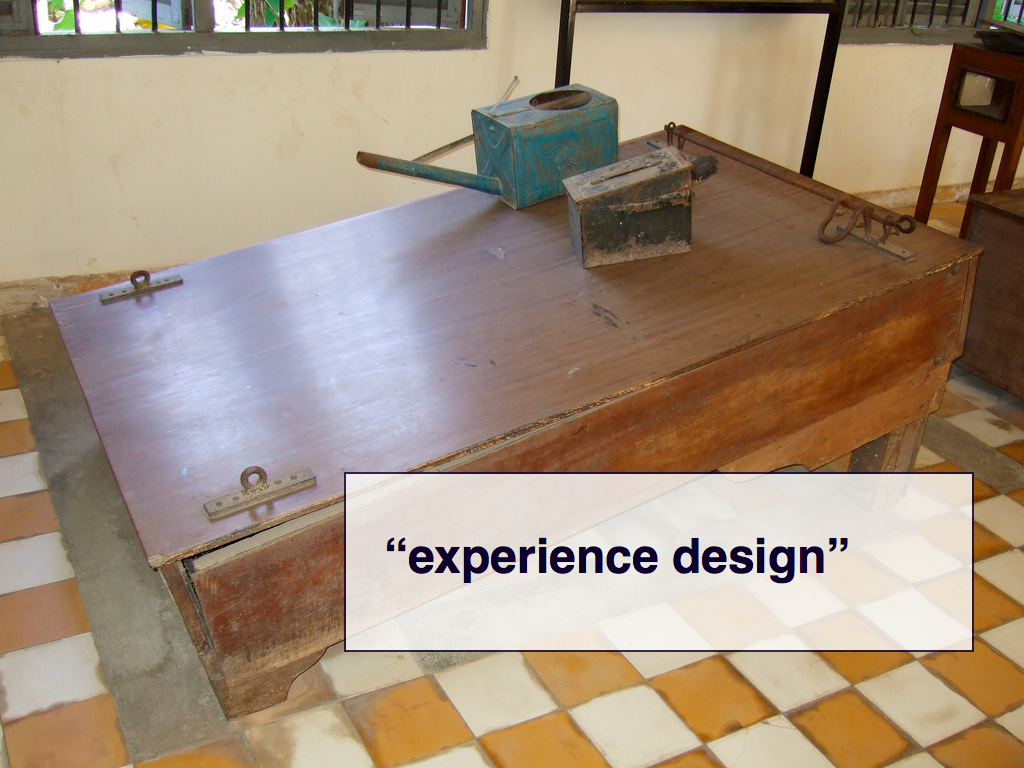
I've been joking for the last year that the Cooper-Hewitt has acquired the War on Terror as an outstanding example of service design. Sometimes I say that we acquired it because it's an exceptional piece of experience design. Most people are confused and horrified by that idea which is, I think, the correct response. If you're not confused and horrified stop for a moment and consider what that means.
Do we have interactive museum experiences where we lock you in a room with an angry dog? Do you get to waterboard your sister? Maybe you can buy an orange jumpsuit at the gift shop or sign up for a weekend package where you get force fed through an intravenous tube like the rapper Mos Def did, or rather tried to do, a few months ago.
This is an actual waterboarding device so there is some precedent for thinking that sooner or later the Global War on Terror, so-called, will be collected by a museum. If you don't recognize this image it was taken at the Tuol Sleng Genocide Museum in Phnom Penh. The museum is housed in the building that used to be Security Prison 21 where it is said that up to twenty thousand people were killed during the years that the Khmer Rouge was in power.
Is this a design object in its own right? Is the War on Terror a design object? I don't know but I use it as an example precisely because it's so extreme. The War on Terror is certainly deliberate and orchestrated with, so we're told, a stated end goal and I'm pretty sure that it's passed the production and manufacturing test we typically use to distinguish design from craft.
Is this not how we usually distinguish design from the other disciplines?
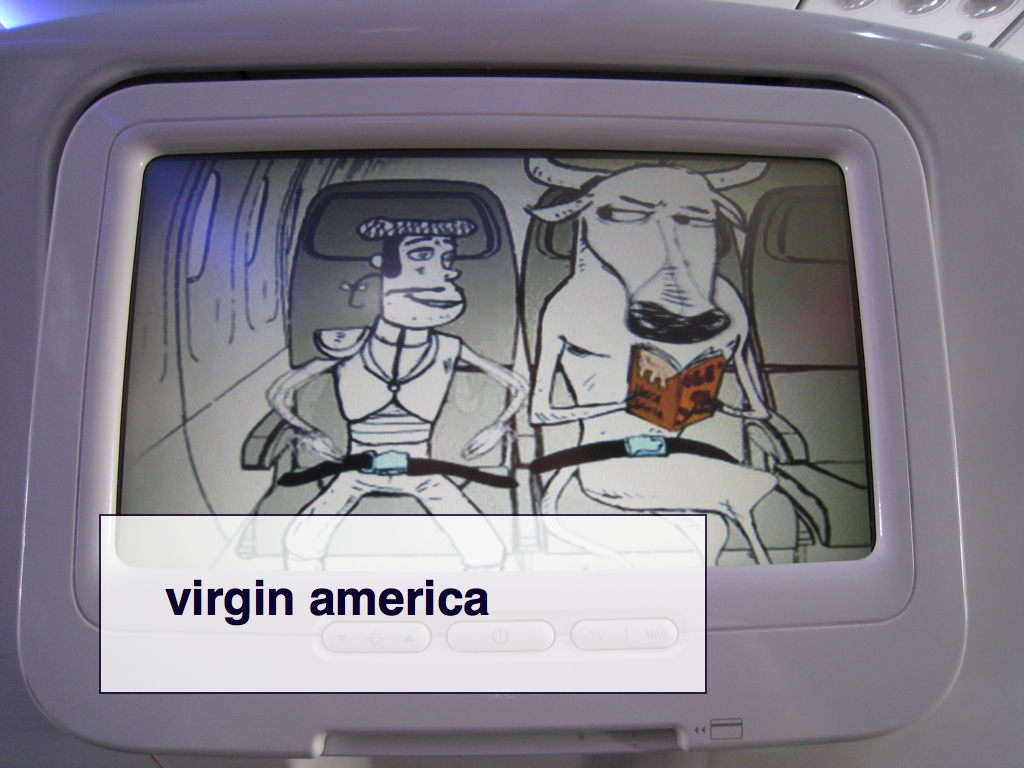
The friendlier version of this story is the one I tell about Virgin America. If we were going to talk about collecting any single instance of contemporary American service design as exemplary then Virgin America is probably it.
The entire process of flying from point A to point B with Virgin America was designed as a signal "experience" spread over the entirety of that transaction. The attention to detail starts - or more accurately started since Virgin eventually switched to using the same backend ticketing system that plagues every other airline - with your visit to their website to book your flight to the design of their aircraft interiors and, if you're flying to San Francisco, all the way to the airport terminal itself complete with its tasteful mid-century modernist seating.
All of this while often very pleasant is also very very deliberate.
But what exactly do we as a design museum collect? How do we capture the spirit of what Virgin America's designers have created? Do we collect a sectional piece of the interior of one of their airplanes with their characteristic purple lights? Do we acquire the safety video with cartoon characters and cheeky copy? How about the minimalist checkin counters with their quirky square boarding passes? That's a thing that people could take home with them which is hard to argue with. Everyone loves taking things out of museums.
Or to really explain to people how successful Virgin America has been at changing what people expect from a passenger airline do we, as a friend once suggested, need to first create an interactive experience that distills everything bad about American airports and airlines in the 21st century and which people must pass through first before they see the alternative?
Perhaps instead we should consider acquiring the rights to operate the San Francisco to New York route and sell tickets to people wanting to understand what it meant to travel in an end-to-end design experience. But we don't really know the first thing about airplanes so I don't think that we should be allowed to do that. Being part of the Smithsonian we could probably partner with the Air and Space Museum since they know all about airplanes and then work out a deal with Smithsonian Enterprises, the commercial arm of the Smithsonian, to sell package tours. It's all surprisingly more possible than you'd imagine if you're part of something the size of the Smithsonian but not everyone has that luxury of association.
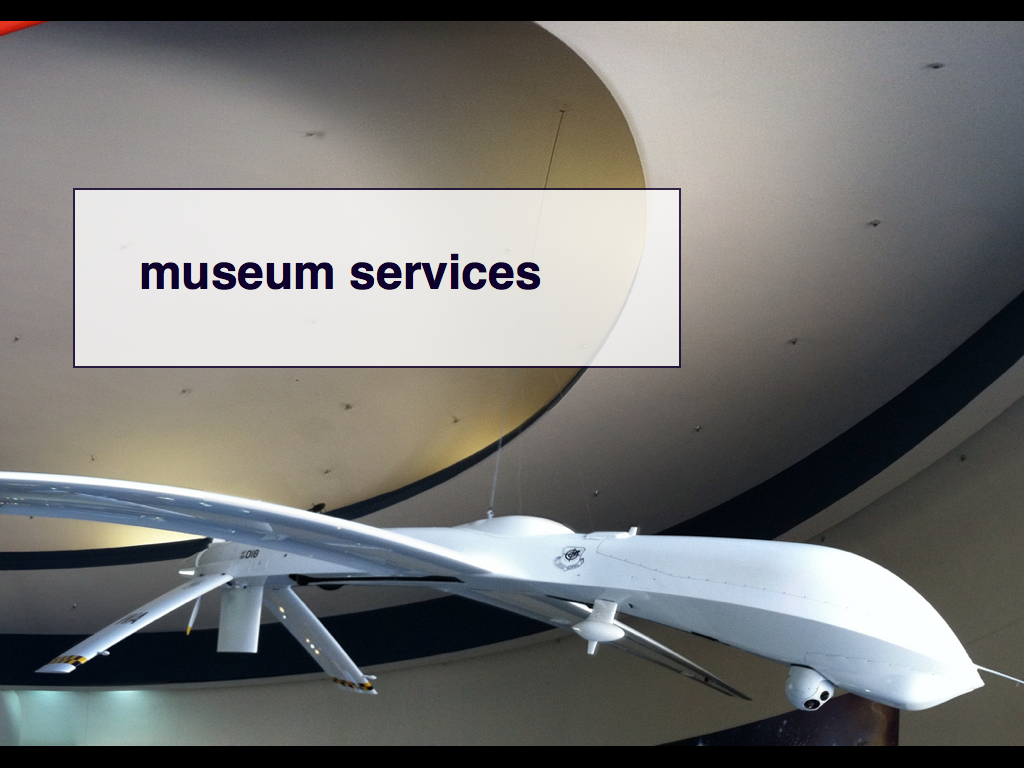
Think of these stories less as specific but rather indicative examples of another larger phenomenon that museums are struggling with. The things we collect are no longer just static objects which can be preserved in amber or in static-free mylar bags. We are collecting things that in order to be properly maintained and studied need to keep working. We are increasingly in the business of operating services, which is new and uncharted and often terrifying territory for many institutions.
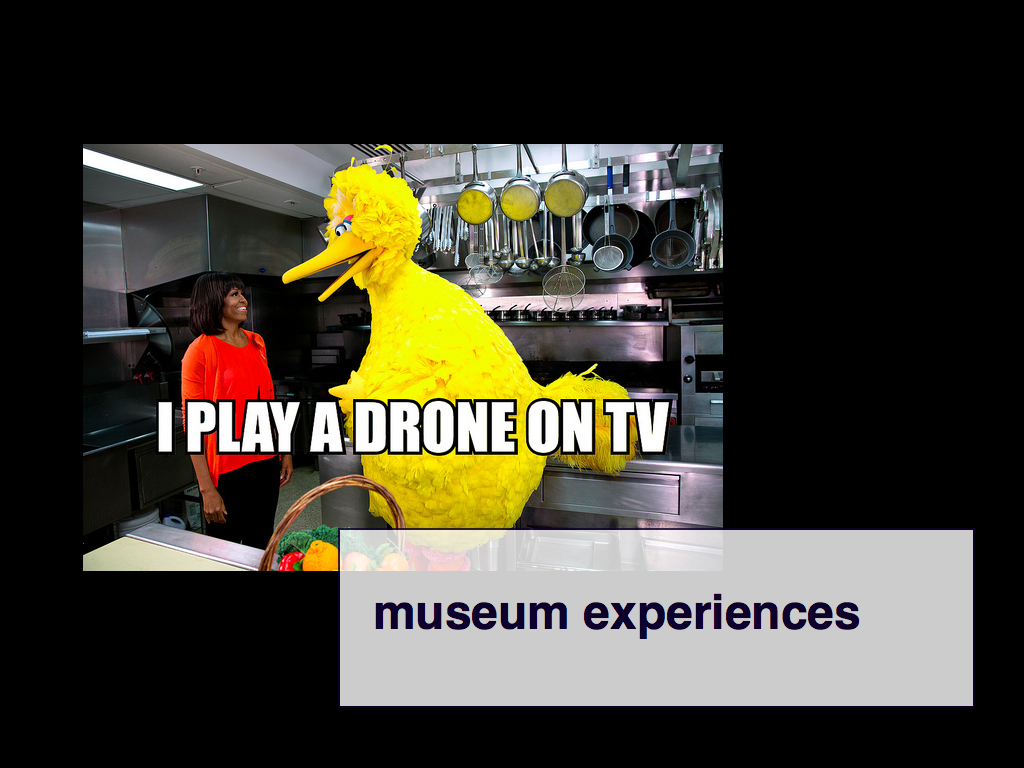
We do this already, really, but what's changed is that we need to start thinking about and treating our objects the way we treat museum visitors.

Recently, we acquired a couple of programmable themostats from Nest, a company founded by some of the original designers of Apple's iPod.
That's cool. It's also true that you could order one for yourself too, right now, but long after the company has gone on to other endeavours we will continue to keep ours safe from harm and off-gassing so that the future might better appreciate the early days of the networked home.
Or will they?
I'm probably not supposed to ask this question in public but I will anyway: If most of what constitutes the magic in a Nest thermostat is defined by its software and interactivity what exactly have we acquired?

Have we just acquired this year's re-imagining of a classic analog design object? Can a self-described working collection even make that accusation?
The point is not to beat up on Nest or Henry Dreyfuss. They have each produced exceptional design objects in their own right. The point is to question how we choose to acquire objects and by those choices whether we've actually acquired anything at all. How many things that we call product design these days don't come with a software component? Even if that number is (x) today it is difficult to imagine that number not growing exponentially in the years to come.
It is an especially difficult question to answer because no one would seriously suggest to Nest that they hand over the source code to a still nascent product that is actively competing with other offerings in the market place. Perhaps it suggests a role for archives and museums to act as a kind of trusted private escrow for things like source code and other intellectual property so that it may be preserved without forfeiting the opportunities of the present. It's certainly an interesting idea but we are busy trying to re-open a museum so that's about as far as we've gotten with that one.
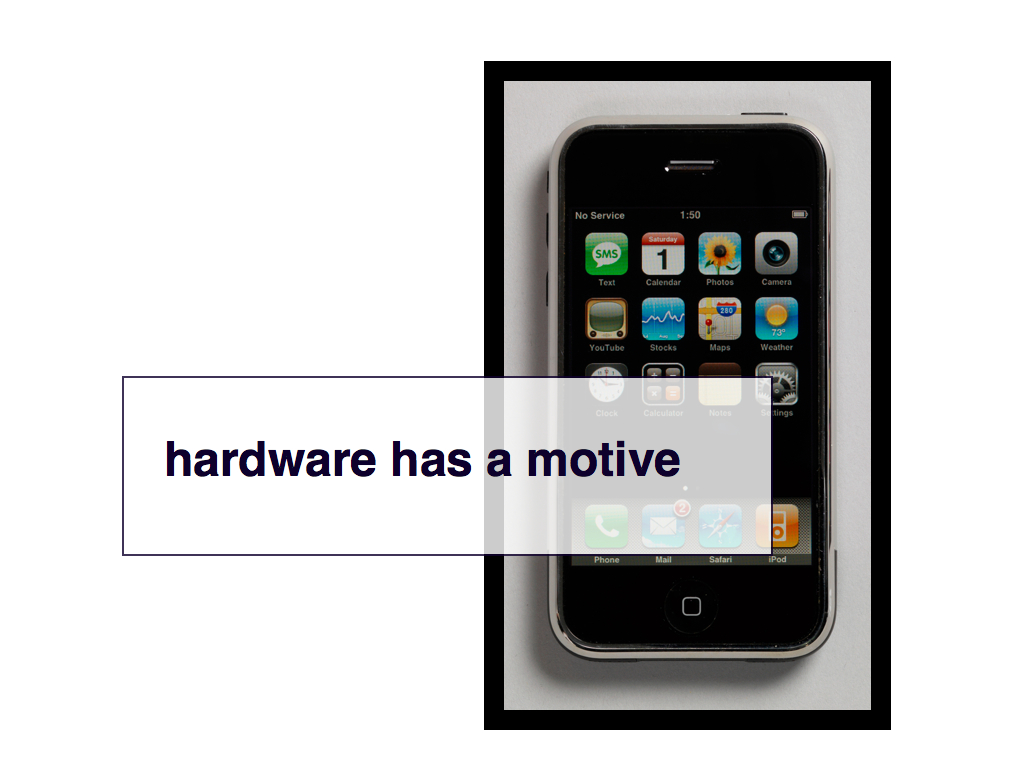
We also have one of the first-generation iPhones in our collection. The trouble with our iPhone is that we can't turn it on. I'm never entirely sure if the reason we can't turn it on is because the electronics are so old that they will short-circuit or simply because we've removed the battery so that it does not leak and damage other objects in our storage facility.
In effect we have a remarkable example of industrial design and manufacturing prowess. Which it is. It really is. But can you meaningfully talk about an iPhone divorced from its software? Can you talk about an iPhone divorced of its interactions?
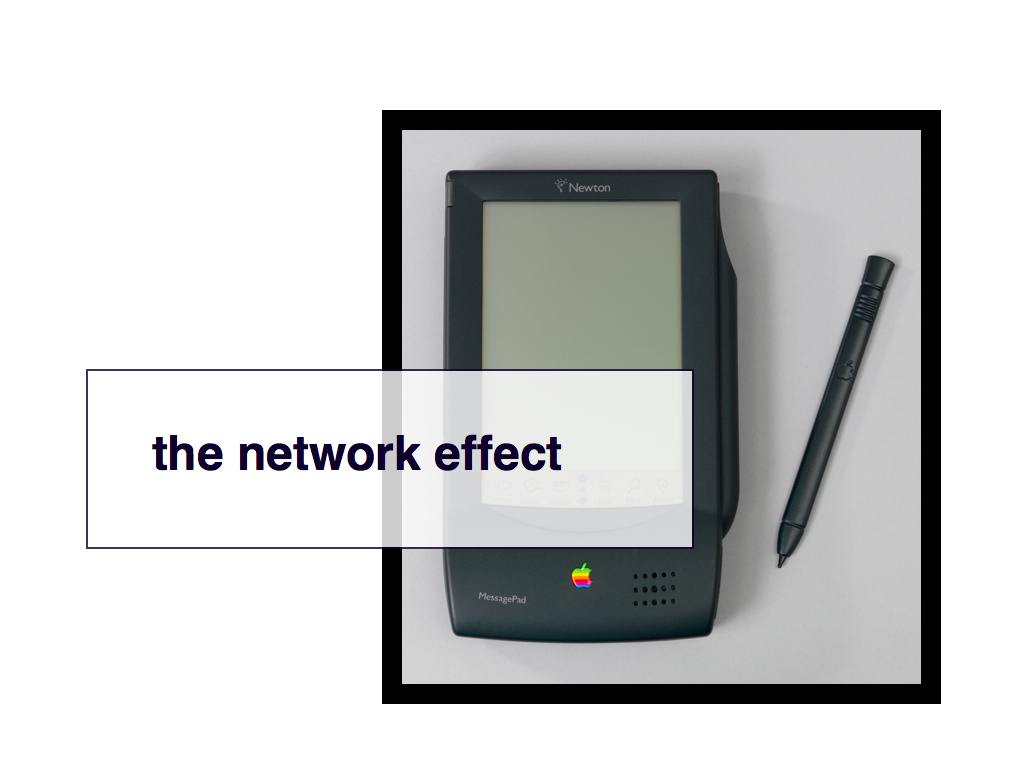
I don't mean to set up a false dichotomy between hardware and software. It's not a challenge dance. The beauty of the iPhone is in the relationship between the hardware and the software. One of the things that I think gets overlooked too easily when we talk about the iPhone and its impact is that it made people sign-up for a monthly, and not always affordable, data-plan without so much as a second thought.
Many of the features that the iPhone popularized had been available in other phones albeit not with the same level of polish or craftsmanship. And Apple certainly wasn't the first to see the possibility of a mobile device with a permanent connection to the Internet. It was though the first company to produce an object so desirable in its form (perhaps in its form alone) that people simply looked beyond their reluctance to purchase an earlier device with similar functionality. And because of that we all experienced the so-called "network effort" both literally and figuratively.
It may be that the inability for any object to be able to speak of its influence without a bespoke narrative is just the burden we all carry. I can accept that but as a cultural heritage institution it seems like our work, today, is to try a little harder to imagine how we might preserve systems as complex and sophisticated as the iPhone beyond simply sheilding their physical form from decay.
This is the Newton MessagePad manufactured by Apple more than a decade before the iPhone was released. It was a complete flop in the marketplace. Using emulation software you can run the Newton's software on your iPhone. So, I'll ask the question again: What exactly did we collect?
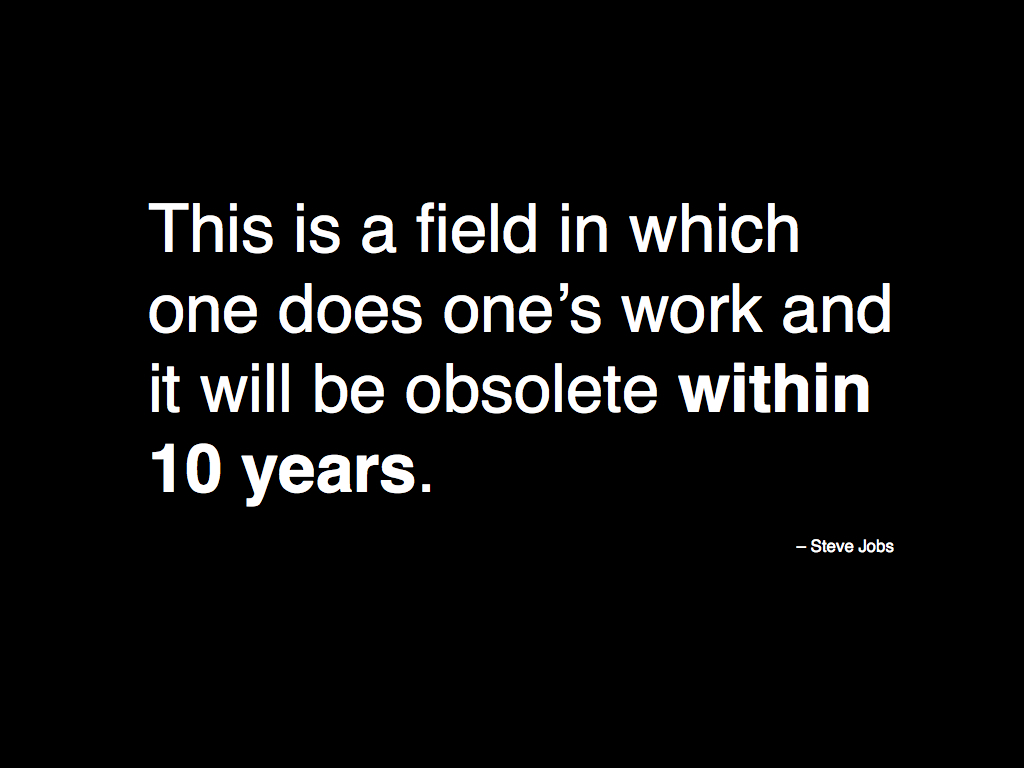
This is the obligatory Steve Jobs quote but I think it's an important one. It's from an interview he did during the time he was running NeXT computer, in between the two periods he ran Apple. My sense listening to the interview is that he saw this as a sort of inevitable truth about computers and software that was ultimately liberating. That is understandable and it is a latitude we afford private enterprise. We have benefited enormously from that freedom not to have to slavishly honour the past.
But sometimes confuse we inevitability with circumstance.
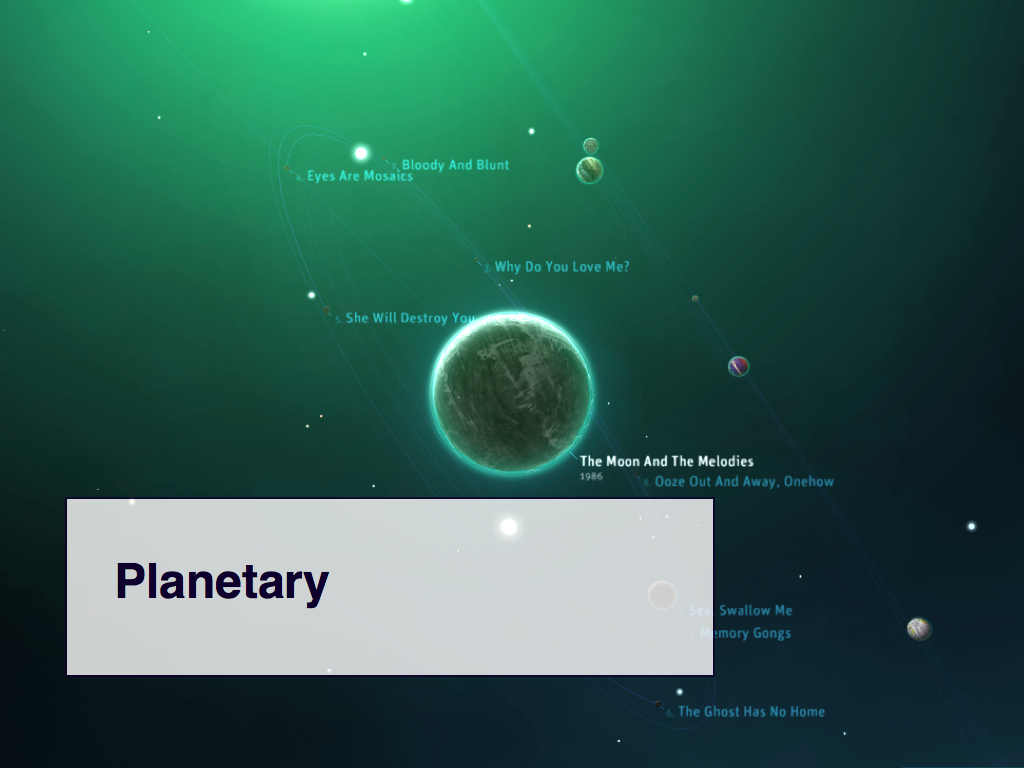
In August of this year the Cooper-Hewitt acquired an iPad application called Planetary, created by a now-defunct company in San Francisco called Bloom. Planetary visualizes a user's music library as a series of celestial bodies. Songs are moons, albums are planets, artists are suns—and the orbits of each are determined by the length of albums and tracks. Their brightness represents their frequency of playback; songs and artists played less frequently than others drift further and further away, over time, from the planets or suns they orbit. Planetary is also a working music player and the time it takes for a moon to orbit a planet is governed by the length of the track that moon represents.
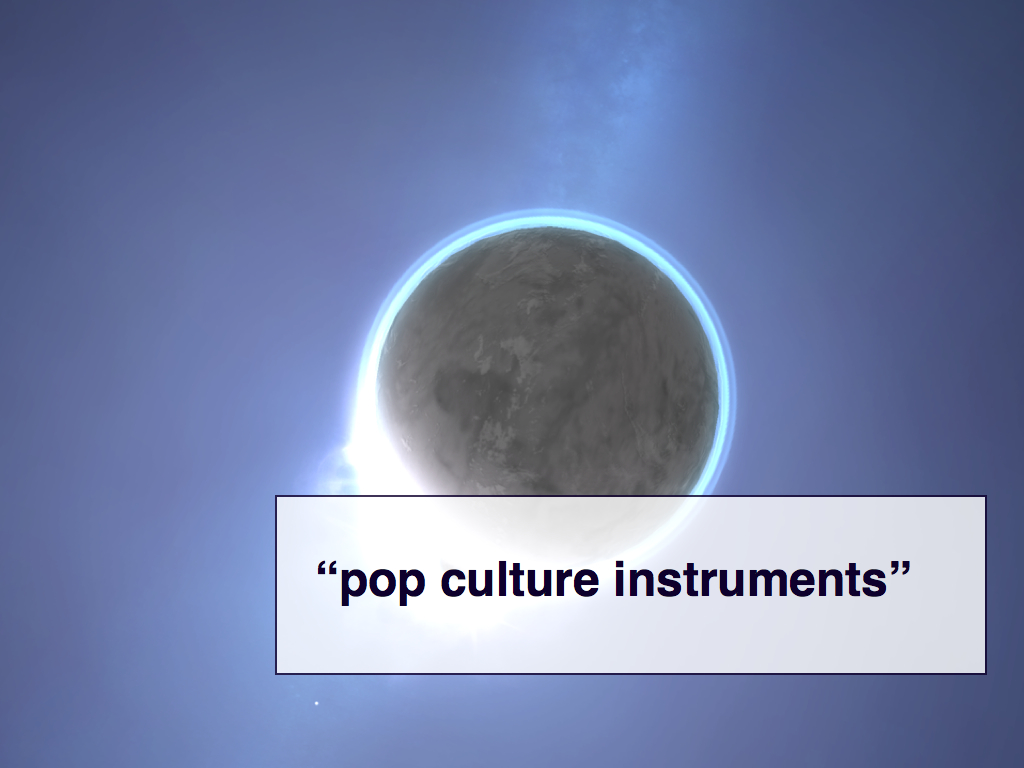
Bloom was fond of telling people that it was creating a suite of "pop culture instruments" and that Planetary was just the first of many. At the time the company was launched Ben Cerveny, one of the founders, wrote:
We’re building a series of bite-sized applications (instruments) that bring the richness of game interactions and the design values of motion graphics to the depth and breadth of social network activity, locative tools, and streaming media services. . . . These Bloom Instruments aren’t merely games or graphics. They're new ways of seeing what's important.
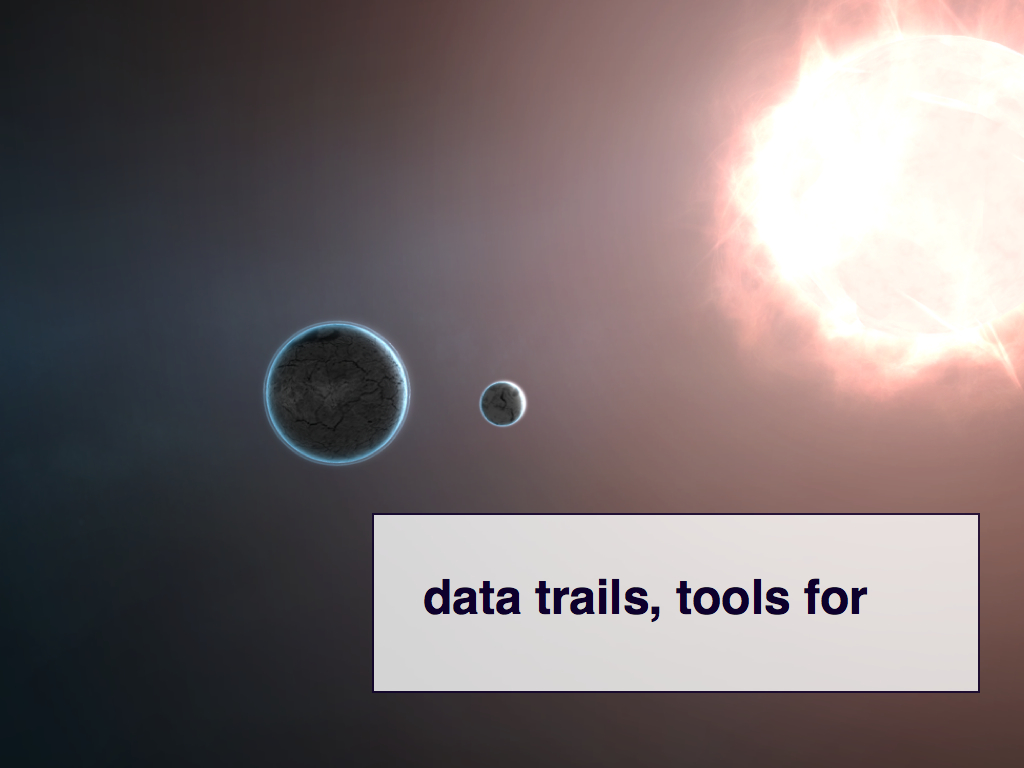
What I like about the idea of these small bite-sized tools to visualize discrete problems, or sets of information, is that you see this idea popping up all over the place these days. Just think about the number of charts and graphs and other visualizations that are available to you every time you view your bank account online. Consider the amount of effort that goes in to trying to help you make sense of just your spending habits and then multiply that by the volume of information we are creating and leaving behind us like a shadow of the past keen to fill the vacuum of the present.

Consider the NSA.
This is a screenshot of one of the documents leaked by Edward Snowden listing some of the tools and filters that the agency has used to spy on, in this case, the French government. You can see the same motivation to filter – to extrude really – all this massive amount of data being collected in to a shape that can be more easily understood.
HIGHLANDS, VAGRANT, LIFESAVER, BLACKHEART. The list goes on.
These are the names of a symphony of instruments that the agency can play the same notes through to different effect and different meaning when played in concert.
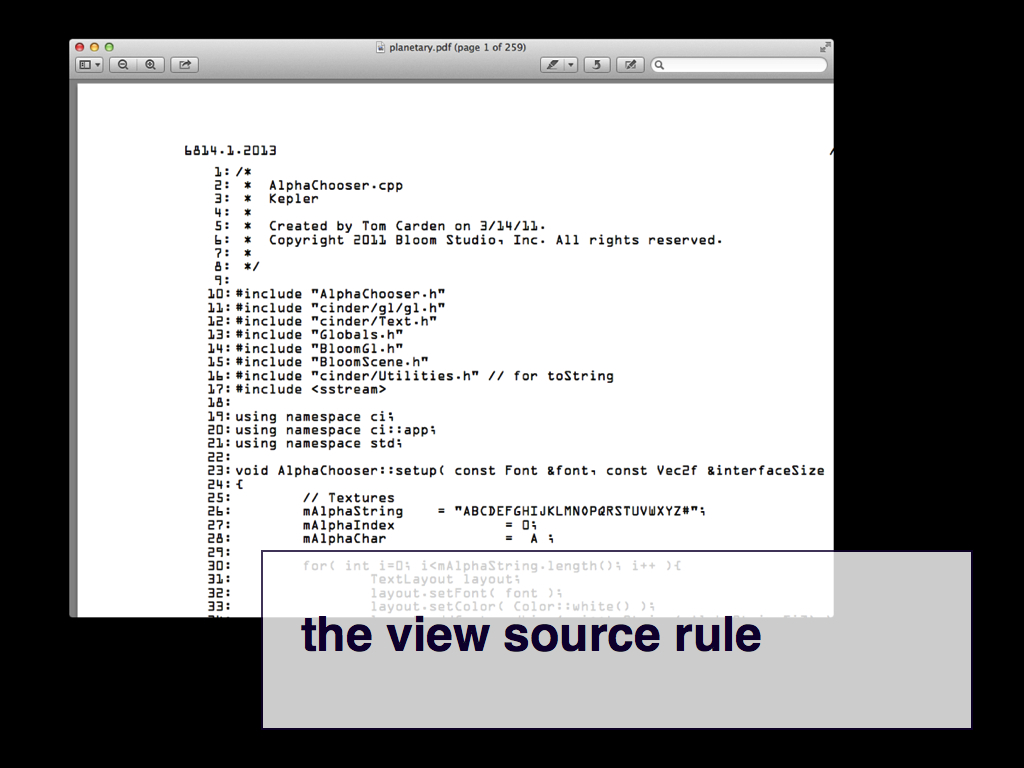
Like all software, Planetary has been skirting obsolescence almost from the moment it was released. Software and hardware are separate but inescapable companions that exact a sometimes profound and warping, and sometimes destructive, influence on one another so we made a point of releasing the code for Planetary under an open source license.
Three years since its first release, hardware and software environments comperable to the first iPad are available from a variety of sources. We are hopeful that people will think that Planetary is as interesting enough to consider porting the code to work on Android devices or in a web browser using WebGL or large interactive surfaces (which are increasingly indistinguishable from large desktop computers or increasingly internet-connected televisions).
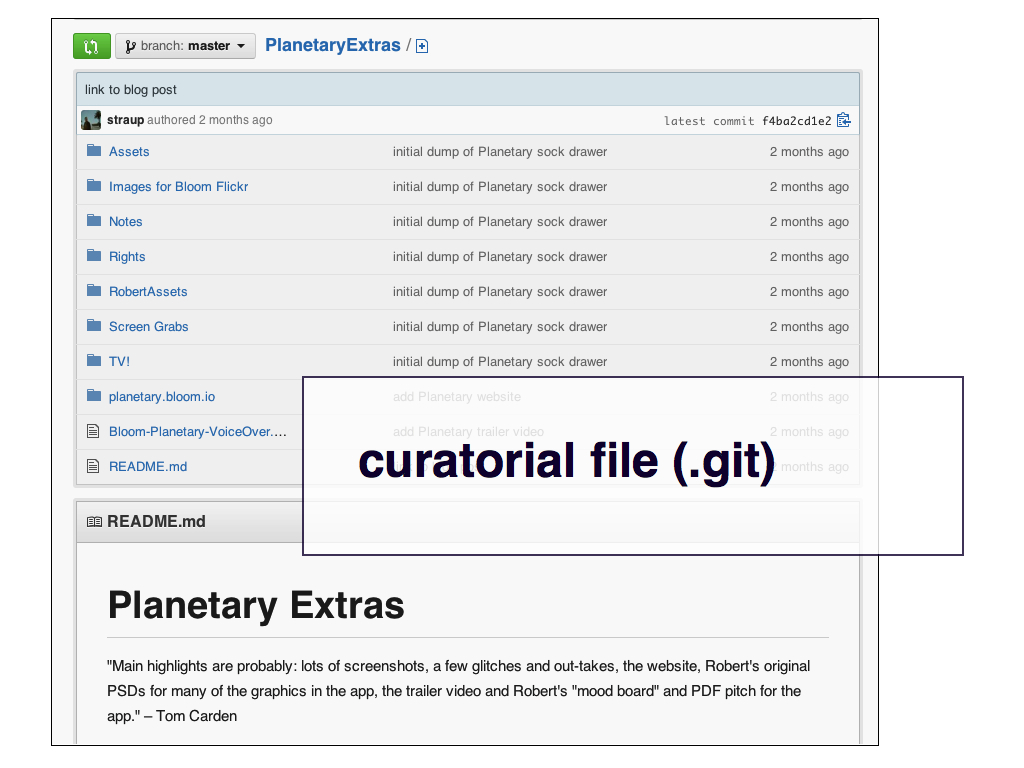
We also acquired both the history of changes to the software itself and many of the working files and other assets associated with the project. They form a kind of curatorial file for the object that, like the source code, can be downloaded and poked in a way that allows us collaborate with the general public without ceding our authority or our responsibility as stewards.

When we announced the acquisition Seb wrote:
We liken this situation to that of a specimen in a zoo. In fact, given that the Smithsonian also runs the National Zoo, consider Planetary as akin to a panda. Planetary and other software like it are living objects. Their acquisition by the museum, does not and should not seal them in carbonite like Han Solo. Instead, their acquisition simply transfers them to a new home environment where they can be cared for out of the wild, and where their continued genetic preservation requires an active breeding program and community engagement and interest. Open sourcing the code is akin to a panda breeding program. If there is enough interest then we believe that Planetary's DNA will live on in other skin on other platforms. Of course we will preserve the original, but it will be 'experienced' through its offspring.
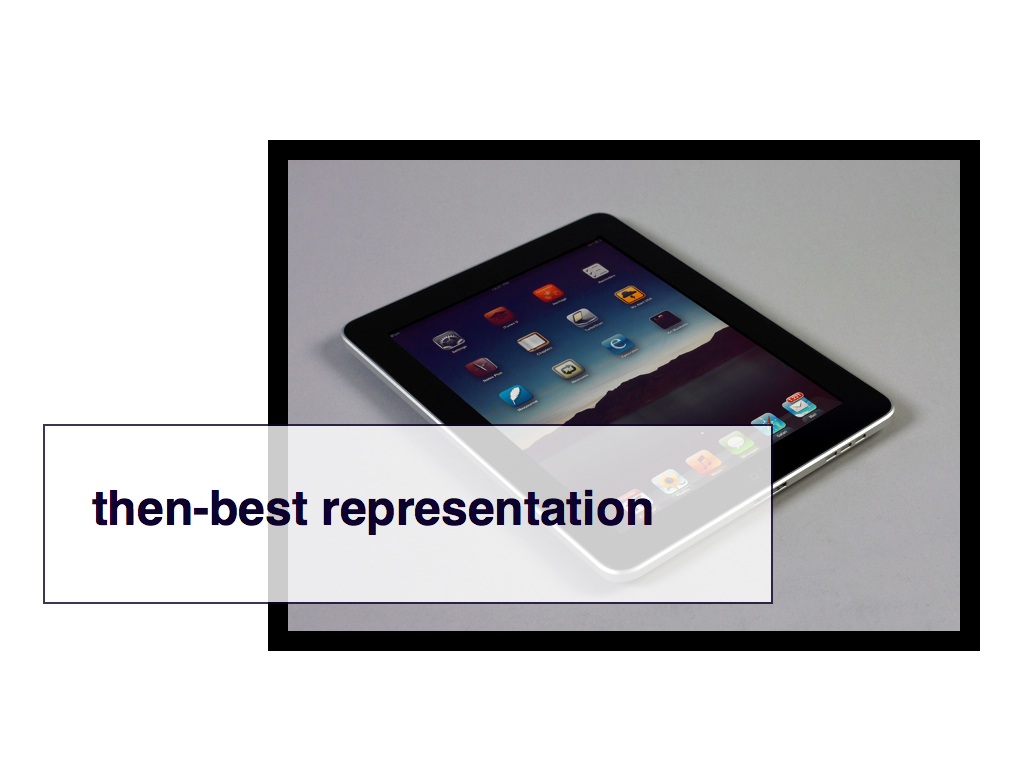
Because we did not acquire an iPad. We already have one of those and it suffers from all the same problems that the iPhone in our collection does. We acquired, instead, a piece of software that happened to run on an iPad. It is true that the original hardware absolutely informs the context that the work was created and experienced in but does that afford it a monopoly on our understanding of the application?
Must we build, as Seb has called them, "period rooms" for every piece of software we acquire? Had Planetary been made to run on another device, by its original authors, would we have had to collect them all or choose just one?
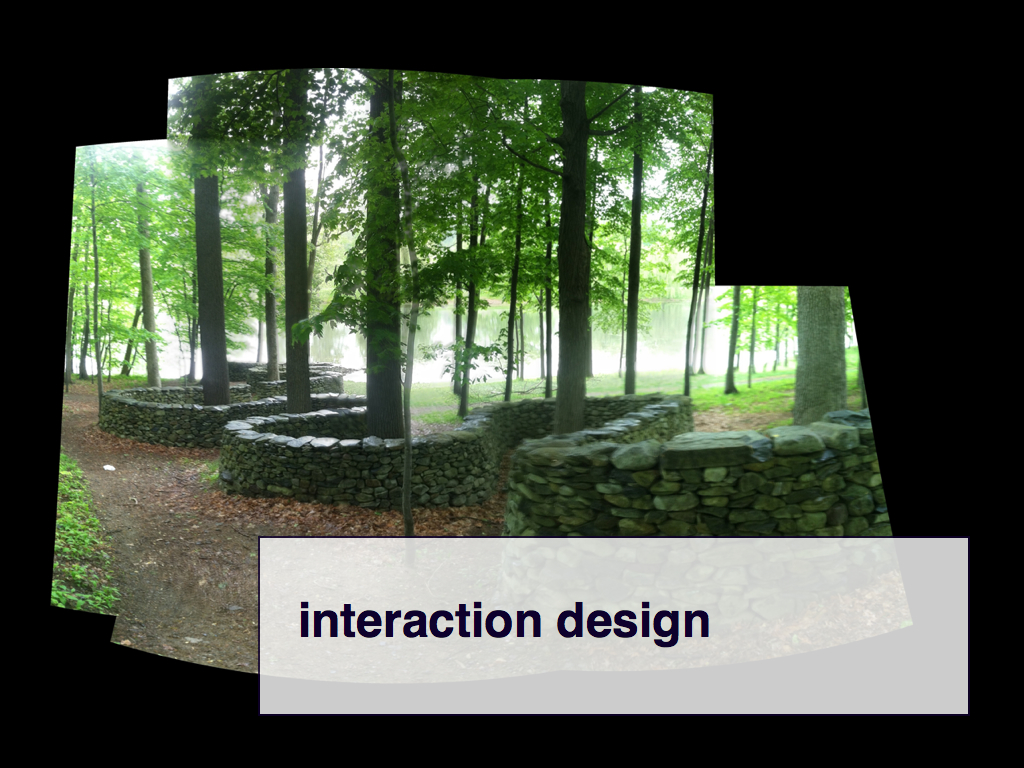
This is why we say the iPad was simply Planetary's "then-best representation" when it was launched. When we talk about why we acquired Planetary we make sure to point out that as much as acquiring a piece of software, and using that as a way to work out how a museum continues to fulfill its mandate in a world gone digital, we have acquired a piece of interaction design.
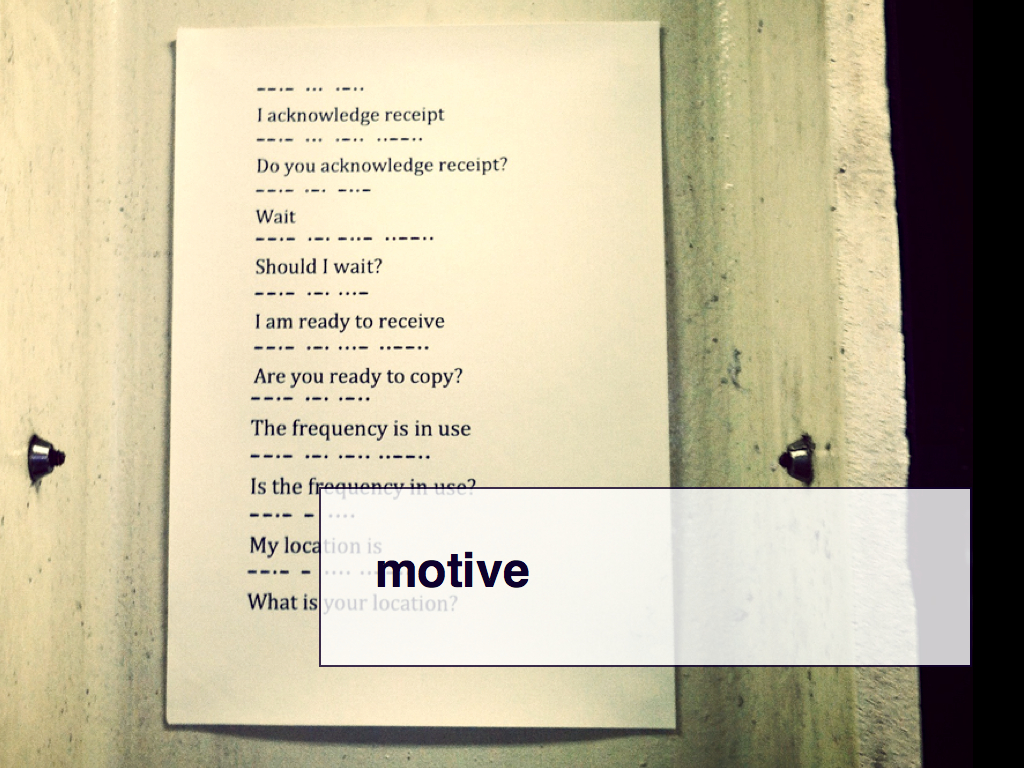
Open-sourcing Planetary was a deliberate preservation strategy on our part and an important part of that strategy was Bloom's CTO Tom Carden agreeing, for a time, to oversee and act as final arbiter of any bug fixes and updates and hopefully newer versions of the code that will allow the software - and more importantly the motive embodied in the application's interaction design – to live on beyond the iPad. Our hope is that Planetary will be the first of many digital acquisitions by the Cooper-Hewitt and one that will help us, and others, figure out how the museum might hold hands with the future-new. Or in Seb's words: "As we collect digital objects we change the institutions that are doing the collecting."
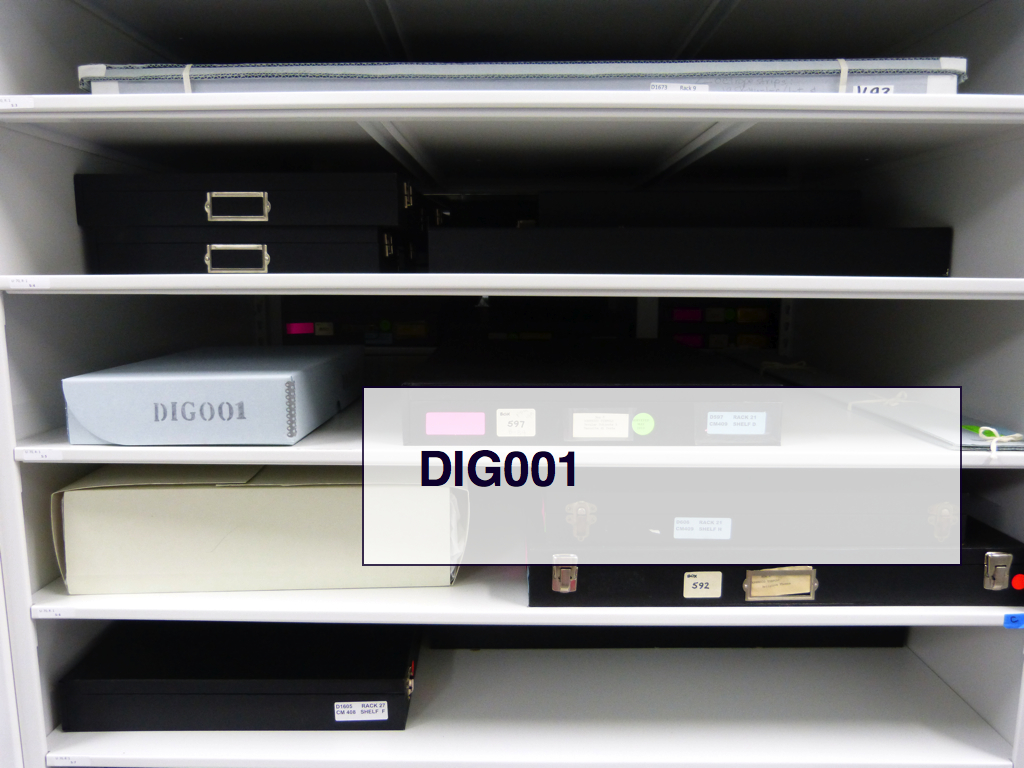
And just in case everything else fails we printed out the source code on archival paper using the approved OCR-A font and it is stored in our collections warehouse along with all the other objects.
This blog post is full of links.
#present
